Are you a Quiet Speculation member?
If not, now is a perfect time to join up! Our powerful tools, breaking-news analysis, and exclusive Discord channel will make sure you stay up to date and ahead of the curve.
Well, it's been a long time since I've written the full metagame update, but you folks haven't gotten rid of me that easily. Know that our plans here at Nexus have always been to resume these and make them regular, but in a way that was sustainable moving forward. Rather than make speculative promises I couldn't keep to the readership, I have elected to work on the scaffolding behind the scenes to make it all possible. Fortunately, we've been able to dedicate more resources lately to developing the required software, and have hired several people to assist. This has freed me up to work on the metagame report itself—hence our return for the month of November.
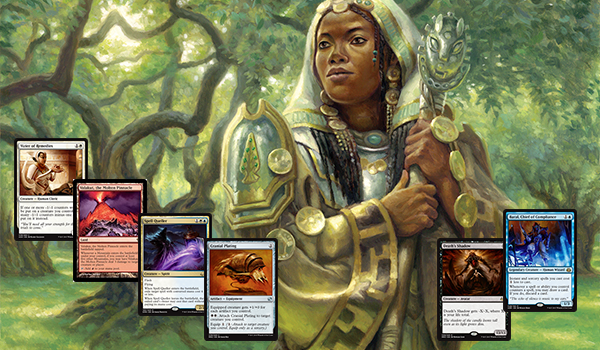
The workload involved in the metagame report is always pretty daunting, so as part of my new "keep Jason fully sane" policy, I won't be going quite as in-depth as before. The numbers are all just as robust, mind you—and they're all available in our Top Decks page as always. But rather than trying to offer a comprehensive analysis of everything, I'll be more so spit-balling about what I see as interesting developments in the data. After that, I'll have some brief announcements about what we have planned at Nexus, and what timeline you can expect it on.
November Metagame
David has been doing an admirable job of tracking the metagame in larger tournaments over the last month or so. The full November report encompasses most of these same events, but it adds a host of others for a much more complete picture. So expect my results here to differ from David's.
The sample size is substantially larger, which bodes well for statistical significance—but there are a large number of smaller, less competitive tournaments that form part of the data set too. Remember, this is a picture of the metagame "as it is played," not a theoretical treatise on strategic viability. But, of course, it still carries strategic implications. The data below should form a solid picture of what to expect if you're playing in Grand Prix Oklahoma City or Grand Prix Madrid this weekend.
Data Collection Methods
As we're coming off a long hiatus, now is as good a time as any to review the methodology we use at Nexus to calculate metagame numbers. To begin with, we compile decks from a variety of online sources, representing both MTGO results and paper tournaments from around the world. All reported archetype names are double-checked to ensure accuracy, and then normalized across sites to get a single name for each given deck.
These archetypes are placed on a bell curve, and then assigned tiers based on their deviation from the expected percentage in the metagame (one standard deviation for Tier 2, two standard deviations for Tier 1).  Tierings are calculated individually for MTGO and Paper metagames, then compiled together with additional points from large-scale major events for the final metagame picture.
Tierings are calculated individually for MTGO and Paper metagames, then compiled together with additional points from large-scale major events for the final metagame picture.
November's data set consists of 374 MTGO decks and 775 paper decks, for a total of 1149. Errors of margin on the Paper and MTGO metagames were 3.52% and 5.07% respectively. That latter figure seems high to me, but I will have to dive back into the data on a later date to confirm or deny. What I feel comfortable saying is that, if the exact percentages in the sample are not guaranteed to reflect percentages in the population, the tiers assigned to each archetype will be (mostly) accurate.
Paper Events
Paper events this month included the Star City Games Regional Championships, Top 8s from all reported RPTQs, the SCG Baltimore Classic, and the SCG Baltimore Team Constructed Open. For the latter, the Modern deck played by each of the Top 8 teams is included. Note that all caveats of split-format events apply here, but as only a small part of the total sample came from this event, it was unlikely to corrupt the data.
A few additional notes:
- Hareruya. The Hareruya store in Japan runs a copious number of events each week. I've generally made a policy of omitting the weekly pick-up tournaments they publish, as attendance for these events is often lower than 20. What we retain are any larger-scale tournaments (like this one) as well as all the ongoing Sunny Day Modern Cup events.
- LigaMagic. This site runs an independent tournament series across much of Brazil. The structure is somewhat unique, so it merits a brief description here. Each store that's part of the series will run five "qualifier" events, any number of which local players may attend. At the end of those five tournaments, the top eight point finishers are invited to a run-off tournament. Note this is done for each store in the league. Qualifier events have low attendance sizes and represent a lot of duplicate decklists, so we omit them here. But the Top 8s are a good stand-in for that of a single, larger tournament. Altogether, 17 of these run-off Top 8s are included in our sample for November.
MTGO
Much has been said of Wizards' recent decision to put the kibosh on representative reporting of MTGO Competitive Leagues. Two things hearten me in this regard. First, the makeup of archetypes in the reported League data is very similar to what we see in the rest of the metagame. While a deck can't appear on one day twice, it can appear several days in a row. The decks doing this were not fringe or rogue strategies, but the exact ones you would expect—proven, Tier 1 contenders like Affinity, Grixis Shadow, and Humans.
 The other positive development is the presence of MTGO Challenges to buttress the League results. In November we had four tournaments of this kind, each of which represents a serious competitive environment where many pros and regular grinders attend. These results are not curated by WotC, but reported as-is, so we get a clear picture of which decks rose to the top.
The other positive development is the presence of MTGO Challenges to buttress the League results. In November we had four tournaments of this kind, each of which represents a serious competitive environment where many pros and regular grinders attend. These results are not curated by WotC, but reported as-is, so we get a clear picture of which decks rose to the top.
All in all, I think the MTGO results are about as useful as they were before (assuming a similar number of Challenges each month). What they probably provide a less clear picture of is the state of the MTGO "hive mind," the collective effect of online players iterating the metagame ahead of the general population. To be sure, this process is still occurring, but it might be slightly more opaque to our analysis than before.
In addition to Leagues and Challenges, three Pro Tour Qualifiers on MTGO were held in November. One was a normal PTQ. The other two were RPTQs qualified players could attend in lieu of a paper RPTQ. In each case the Top 32 was included. Given the notorious difficultly, strategically speaking, that events like these on MTGO are known for, assigning them extra weight seemed justified.
Day 2 Data
This is another area of our analysis that has suffered from Wizards' decision to scale back deck reporting. That said, it's always been a little spotty given the low number of SCG Opens and Grand Prix. For this month, we're looking at two events. The first is the SCG Team Constructed Open in Baltimore. Decks making Day 2 in this event were undeniably influenced by their teammates' choices in Standard and Legacy. The second isn't Day 2 data per se, but each archetype's collective share of the RPTQ Top 8s, which I felt was a similar phenomenon.
Because these events don't do a great job of representing conversion after a long tournament of many rounds, the Day 2 data was weighted at half its normal value. I'll be revisiting Day 2 data in future updates, and evaluating whether or not it should continue to form a regular part of our analysis.
The Compiled Metagame
Onto the metagame numbers themselves. The most prominent narrative I've heard over the last few months is that Storm and Death's Shadow are the decks to beat. That is, at minimum, what most people in my own testing group have concluded. The November data seem to corroborate that conclusion, but they also present a relatively healthy metagame with a variety of other strategies in the top tier. For an easy-to-read version of all this data in one place, go here.
Tier 1: 11/1/17 - 11/30/17
First, a note about what exactly we're looking at is in order. Whenever Magic players get together to discuss a format, the twin phrases "tier-one" and "best deck" get thrown around like a football at a family gathering. Pros are guilty of this too. It's typical to hear a lot of speculative claims based on anecdotal evidence or extremely small sample sizes from testing sessions. 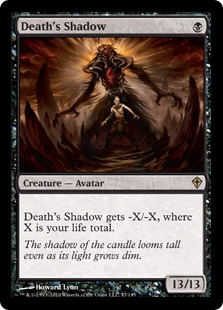
And yet, I will still perk up and take notice whenever a major pro makes a statement of this nature. The thing is, there's never enough data to make definitive statements about a deck's "true" power level—that's what makes the game compelling. We can't even test one deck in a perfect facsimile of a metagame, with a control group and all, much less an entire format's worth of decks. Absent this hard data, we must rely on intuition and qualitative assessments; as pros are better at this than the average player, we're interested in the conclusions they draw.
In light of this, I think it's instructive to understand "Tier 1" as a polyvalent phrase. On the one hand it refers to a strategic phenomenon: the decks with the highest power level and most advantageous positioning in a specific metagame. This is the most commonly accepted use, and what pros generally mean when using the term. The second meaning refers to a statistical phenomenon, that corresponds roughly to the metagame as it's being played. This is what we attempt to capture, as scientifically and rigorously as possible, here at Nexus.
There will undoubtedly be some overlap between these two definitions—after all, even us lowly grinders still have a brain in our noggin, and the better decks will be correlated with higher incidences of play. Just remember that the correspondence won't be perfect. The statistical phenomenon should be seen as an indicator of deck strength, but one that's intertwined with other confounding or intervening variables—deck difficulty, perception of strength, and card availability, to name a few.
So back to our Tier 1 decks. Some of this I'm gonna go out on a limb and call unsurprising (Affinity's still good? Shocker!). Here are my notes on the more interesting developments.
- At 4.7%, Grixis Shadow initially looks way less impressive than I had suspected. This changes once we roll in the share held by 5-Color Shadow, which appears in Tier 2 below. Together they form 6.7% of the meta, just under top dog Affinity. I'm inclined to agree with the pros' claim that something (possibly deck difficulty) is causing players to shy away from a deck that should, by most indications, see more play. Don't sleep on this matchup for GP Oklahoma City or GP Madrid—the further you get into the tournament, the more likely you are to run up against Shadow.
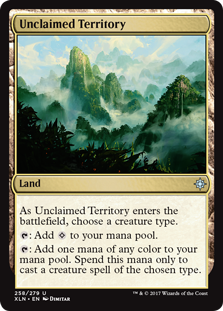 Humans are one of the biggest stories of the last month or so, and they seem to have delivered on their promise. Ixalan was good to the Human tribe with Kitesail Freebooter and Unclaimed Territory. It doesn't hurt that their matchup against two of the strongest decks (Shadow and Storm) is favorable. I don't think we've seen the last of this archetype, and it's only getting more tools as Wizards releases new sets.
Humans are one of the biggest stories of the last month or so, and they seem to have delivered on their promise. Ixalan was good to the Human tribe with Kitesail Freebooter and Unclaimed Territory. It doesn't hurt that their matchup against two of the strongest decks (Shadow and Storm) is favorable. I don't think we've seen the last of this archetype, and it's only getting more tools as Wizards releases new sets.
- Speaking of old decks with a new lease on life, Jeskai Tempo has been doing quite well for itself. I think this is one part metagame development, and one part Spell Queller. As sometimes happens in eternal formats, players can be stubborn to adopt new tech or shift to different strategies. Note that per our classification, none of the decks in that 5.5% figure are control variants. Almost every deck had Geist of Saint Traft, and the few that bucked that trend ran additional threats. By now the full playset of Quellers is pretty much universal. The more traditional Jeskai Control variants are covered below in Tier 2.
Tier 2: 11/1/17 - 11/30/17
Tier 2 looks about typical too. Per-archetype notes:
- The vast majority of those Gx Tron decks are black variants. Collective Brutality and Fatal Push provided the deck with some much-needed utility it was lacking before, and I think this is just the de facto consensus build now. A few lists in the data were RG or Mono-Green; I believe only one splashed white.
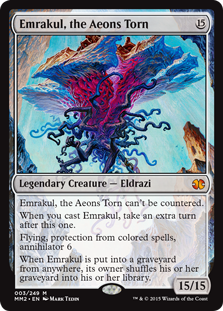 The presence of UR Breach in Tier 2 might catch some by surprise, but a closer examination of the deck reveals it's basically just Blue Moon with a new wincon. Blue Moon has always exhibited lots of variety in its finishers—we've seen it packing Batterskull, Kiki-Jiki combo, Docent of Perfection, and Madcap Experiment. It appears that Through the Breach plus Emrakul is the kill of choice right now, although the Kiki-Jiki version is posting about 0.7% itself. Combining the two together they make up 3.4% of the meta, so it's safe to say Blue Moon is on the rise.
The presence of UR Breach in Tier 2 might catch some by surprise, but a closer examination of the deck reveals it's basically just Blue Moon with a new wincon. Blue Moon has always exhibited lots of variety in its finishers—we've seen it packing Batterskull, Kiki-Jiki combo, Docent of Perfection, and Madcap Experiment. It appears that Through the Breach plus Emrakul is the kill of choice right now, although the Kiki-Jiki version is posting about 0.7% itself. Combining the two together they make up 3.4% of the meta, so it's safe to say Blue Moon is on the rise.
- Rob wrote about Lantern Control earlier this week. All I wanted to note here is that outside of a few paper decklists, all these lists run four Whir of Invention. At this point I would just assume my opponents had access to that card if they're on Lantern.
- Most people know which deck Eldrazi and Taxes refers to by now. Take one part Thalia, Guardian of Thraben and Leonin Arbiter, add a hefty dose of Eldrazi Temple, Thought-Knot Seer, and Reality Smasher, finish with a dash of Sculler-plus-Strangler seasoning. The latest trend is to cut the hatebears package entirely, yielding a more controlling variant with Lingering Souls and planeswalkers. To my eye this deck is sufficiently different to merit consideration as a separate archetype. We've reported these builds under "BW Eldrazi," which make up 0.7% on their own in Tier 3.
- If I had to guess, I'd say Hollow One is the flavor-of-the-month that may not make the grade for long. Two variants, BR and RG, are represented here about equally. As this archetype's pilots figure out the optimal build we'll see if it can maintain its high-end showing.
- I already discussed the Jeskai Tempo decks in Tier 1. As for old-school Jeskai Control, it's still posting a respectable standing itself, especially when considered alongside cousin UW Control. The most interesting innovation here is Search for Azcanta, which is cropping up in lots of lists as a great way to generate card advantage without clunking up hands and draws.
Tier 3: 11/1/17 - 11/30/17
Finally, the Tier 3. Again, I don't think anything here is shocking—Modern continues to present its dizzying array of strategies, and anything can win on a given weekend.
- The printing of Vizier of Remedies has obviously given Abzan Company a new life in Counters Company, but its effects reach farther than that. Elves is also beginning to adopt the combo in significant numbers. Devoted Druid is (yup) an Elf that already fits in their core game plan, so it's a natural inclusion. A few players are still on the Mono-Green or Shaman of the Pack variants.
 Merfolk has gone green, and I'm not sure it's going back. With one or two exceptions, everyone in November's data was on both Kumena's Speaker and Merfolk Branchwalker. Both these cards just seem like such a natural fit to me, as they play very well with lords. I'll leave it to David and Roland to discuss whether we've seen the last of the mono-blue or blue-white fish decks.
Merfolk has gone green, and I'm not sure it's going back. With one or two exceptions, everyone in November's data was on both Kumena's Speaker and Merfolk Branchwalker. Both these cards just seem like such a natural fit to me, as they play very well with lords. I'll leave it to David and Roland to discuss whether we've seen the last of the mono-blue or blue-white fish decks.
- There's always a lot of variation in the midrange CoCo decks. Here you could lump GW Company and Bant Company together if you were so inclined, but I think they will play out differently. Note that in the Bant Company shares, most lists are actually Knightfall. Outside of the few copies of Retreat to Coralhelm, the Bant CoCo deck is almost identical, including the Kessig Wolf Run to tutor up with Knight of the Reliquary.
- Midrange Mardu decks are often kicking around in Tier 3, but it's rare to see widespread agreement on build. Mardu Tokens may be changing that. These decks are built around a full set of Bedlam Reveler, flanked by Lingering Souls, Young Pyromancer, and/or Monastery Mentor. Notably, Bitterblossom is nowhere to be found.
Updates on Ongoing Projects
Announcement time. You may have noticed those orangeish links on a few of the archetypes in the tables above. These will eventually link to primers for each archetype. Right now the articles are just stubs, introductory pieces to be expanded upon later. Last year I found that the work required for these was about a ka-jillion times more than I had anticipated. So this is a long-term project that will take time to implement, with snippets being released as they become ready. Rob San Juan is helping me do the initial research and write-ups for the intros. After that I will start brainstorming how to flesh out the rest.
The end goal here isn't so much a series of articles that you would read from beginning to end, but more an encyclopedia of archetype information you could return to periodically to answer specific questions. There is no way that I can copy-edit all of this information, especially when you consider that it will be a moving target—new decks, new printings, developments in archetype technology, bannings, and more will necessitate regular updates. So it will be subject to a different editorial process.
What I'm envisioning is a kind of wiki that the community can help co-write and then update. That said, I want to retain a certain rigor in the information that's presented to prevent it from devolving into the sort of rampant speculation and unsubstantiated claims the internet can be prone to. I'm still trying to figure out how this can be done, but my current thought is to enlist moderators with experience playing each archetype who can monitor a given page. I'll definitely be looking for suggestions on this front from readers, so if you have any ideas, do pass them on.
Let me make clear that this is a massive undertaking, and I frankly have no concrete idea of the timeline. I hope you'll be patient with us as we put it together, and I trust you'll appreciate that we want to bring the Nexus quality of analysis to bear on the project.
Jason Schousboe
Editor in Chief


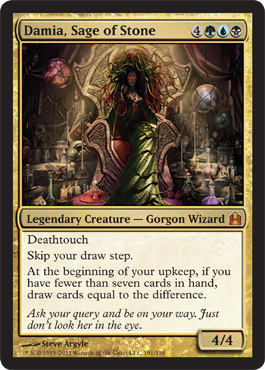



Very pleased to finally see an update. Well done, Nexus is back baby!
Nice to see this again. May just be my mobile browser but in your tables I see square brackets and “archetype” written out instead of what I assume was supposwd to be an orange link to a stub page. Ie its not even a hyperlink to me.
Hm, good to know. I haven’t tested those on every platform. Can I ask what browser your mobile uses?
Whatever browser it is blackberry uses. Strangely the links were working properly here for a while then I reloaded to comment saying seems fine now and after the reload it went back to showing the code. No big deal unless you hear lots of others have the issue – otherwise chalk it up to aging device/technology
I was changing it around today, that’s what you noticed. I know what’s causing it but it might take a bit to fix.
What is the picture in the background with cards on top of it?
That is actually an alternate-art judge promo for noble hierarch.